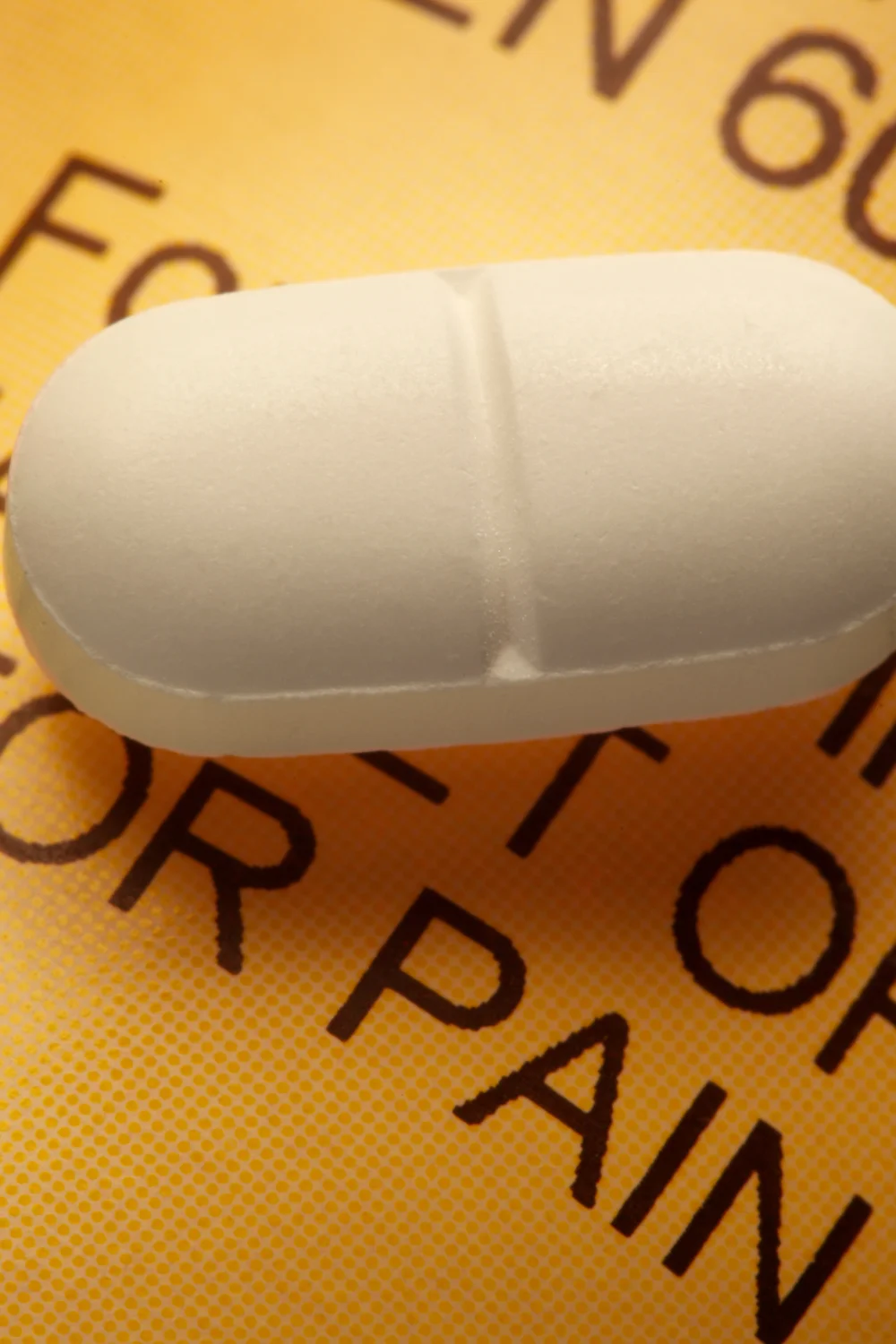Hydrocodone leaves distinct fingerprints in your system, staying detectable long after its pain-relieving effects wear off.
While most people clear this opioid within 2-4 days, factors like dosage, metabolism, and frequency of use can stretch this window significantly.
The question of “How long does hydrocodone stay in urine?” isn’t just about numbers or science—it’s about finding clarity, feeling empowered, and making choices that matter.
Are you or someone you love struggling with drug dependency? Explore our medical detox program – let us help you start anew.
What is Hydrocodone?
Hydrocodone is a prescription opioid commonly used to treat moderate to severe pain.
It works by binding to opioid receptors in the brain, altering the way the body perceives pain. Often combined with other medications like acetaminophen, hydrocodone is found in brand-name drugs such as Vicodin, Norco, and Lortab.
While hydrocodone is effective for pain relief, this medication is still classified as a Schedule II controlled substance in the United States. This means that it has a high potential for abuse and addiction.
For many, what starts as a legitimate prescription can spiral into dependency, especially when taken for extended periods or in higher doses than prescribed.
Hydrocodone’s role in the opioid crisis highlights the importance of understanding its effects, detection, and risks.
How to Understand Hydrocodone Detection Windows

When people ask “How long does hydrocodone stay in urine?” they’re often referring to what’s called the “detection window.”
The detection window is the period during which the drug or its metabolites can be identified in the body through testing. Detection windows vary depending on the type of test used, the individual’s health, and other factors.
For urine tests, hydrocodone is typically detectable for 2 to 4 days after the last dose, but this can extend for chronic users or those with slower metabolisms.
And for anyone concerned about legal or medical implications, knowing how long hydrocodone stays in urine can give them the confidence to handle these situations more easily.
Elimination Half-Life
Understanding how long hydrocodone stays in urine starts with the concept of elimination half-life.
The hydrocodone half-life is approximately 3.8 hours, which means that after 3.8 hours, half of the drug has already been metabolized and excreted.
This explains why the effects of hydrocodone don’t last very long, but its metabolites can stick around in your body for much longer.
That said, the half-life doesn’t tell the whole story when it comes to detection. Even after the drug itself is gone, its byproducts — like hydromorphone — can still show up on drug tests.
These metabolites extend the detection window, making it possible to identify hydrocodone use even after the effects have worn off. So, while the half-life gives you a starting point, other factors like your metabolism and how much you’ve taken will affect how long the hydrocodone stays in the body.
Related: Does Alcohol Show Up on a Drug Test for Work? What You Need to Know
Factors Affecting Detection Time
The length of time hydrocodone remains detectable in urine isn’t the same for everyone. Several factors influence how quickly the drug is metabolized and excreted, making drug test detection times vary from person to person.
Dosage and Frequency
The amount of hydrocodone taken and how often it’s used are two of the most significant factors affecting detection time.
Higher doses mean more of the drug in the system, which takes longer to process. Similarly, frequent or chronic use can lead to accumulation in the body, extending the detection window.
For someone who takes hydrocodone occasionally, it may clear the system within a few days.
However, for chronic users, how long hydrocodone stays in urine may extend beyond the typical 2 to 4-day window, as the drug can accumulate in the system over time.
Metabolism Rate
How fast your body processes hydrocodone depends a lot on every person’s metabolism rates.
People with faster metabolism are likely to eliminate the drug more quickly; but if your metabolism is slower, it might stick around longer.
Factors like age, activity level, and genetics all influence this process.
For example, younger individuals with active lifestyles often metabolize hydrocodone faster than older adults, whose slower metabolisms may extend the drug’s presence.
Individual Health Factors
Health conditions, particularly those affecting the liver and kidneys, can significantly impact how long hydrocodone stays in the body.
The liver is responsible for breaking down the drug, while the kidneys excrete it. If either organ is compromised, the elimination process may be slower.
Other factors, such as hydration levels, body mass, and overall health, also play a role. It’s important to remember that these variations are normal and not a reflection of personal failure.
Different Drug Test Methods

Not all drug tests are the same, and the type of test used can really affect the detection window.
For example, urine tests have a different detection window than blood, saliva, or hair tests. Knowing the differences between these methods can help you feel more prepared and make sense of the results.
Urine Testing Specifics
Urine screening methods are the most commonly used for detecting hydrocodone, particularly in employment or legal contexts. It’s non-invasive, cost-effective, and has a relatively short detection window.
- For occasional users, hydrocodone is typically detectable in urine for 2 to 4 days after the last dose.
- Chronic users may test positive for longer, depending on their usage patterns and metabolism.
Urine tests work by identifying hydrocodone and its metabolites. While generally accurate, they are not infallible. Factors like hydration levels and testing cutoff levels can also influence results, leading to false positives or negatives in some cases.
Alternative Testing Methods
Other testing methods, such as blood, saliva, and hair tests, offer different detection windows.
- Blood tests have the shortest window, typically detecting hydrocodone for up to 24 hours after use.
- Saliva tests are slightly longer, with a detection window of 1 to 2 days.
- Hair tests, on the other hand, can detect hydrocodone use for up to 90 days, making them useful for long-term monitoring but less practical for recent use.
Each method has its pros and cons.
- Blood and saliva tests are more invasive but provide a shorter detection window, making them ideal for recent use.
- Hair tests are less invasive but have a much longer window, which may not be relevant for all situations.
Detection Thresholds
Testing cutoff levels refer to the minimum concentration of hydrocodone or its metabolites required for a test to register a positive result.
These thresholds vary by test type and laboratory, which can affect results.
For example, a highly sensitive test may detect trace amounts of hydrocodone, while a less sensitive test may not. Understanding these thresholds can help you interpret test results more accurately.
Related: How Long Does Suboxone Stay in Your System? A Complete Timeline
False Positive Considerations
False positives can be a source of anxiety, especially in employment or legal situations. While rare, they do happen, and understanding the causes can help you advocate for yourself if needed.
Cross-Reactive Substances
False positive factors, such as cross-reactive substances or errors in testing, can sometimes lead to inaccurate results in urine drug tests.
Over-the-counter medications like antihistamines or even other prescription opioids are often to blame. So if you’re taking any medications, it’s a good idea to let the testing facility know beforehand to avoid any confusion or unnecessary issues.
Prescription Documentation
If you’re prescribed hydrocodone, make sure to keep proper documentation.
Most testing agencies allow individuals to provide proof of prescription to resolve discrepancies. This documentation can protect you in employment or legal situations, ensuring that your legitimate use of hydrocodone is not mistaken for misuse.
Metabolism and Processing
When you take hydrocodone, your liver breaks it down into metabolites like hydromorphone, which are then filtered out by your kidneys.
While the drug itself might leave your bloodstream fairly quickly, these metabolites can stick around and show up on drug tests for a longer time. That’s why knowing how metabolism works is so important when it comes to understanding test results.
Legal Implications
The legal implications of hydrocodone use vary depending on whether it is prescribed or misused.
Knowing your rights and what’s expected of you can help you handle these situations with clarity and confidence, ensuring compliance with the law.
Prescription vs. Non-prescription Use
Having a valid prescription for hydrocodone typically protects you against legal repercussions.
However, misuse or non-prescription use can lead to serious consequences, including criminal charges. It’s important to use hydrocodone only as prescribed and to seek help if dependency becomes an issue.
Employment Testing Rights
Employment drug testing can be stressful, but it’s important to know your rights.
Most employers allow individuals to disclose prescriptions confidentially, ensuring that legitimate use does not result in penalties.
If you’re unsure about your rights, consider seeking legal advice or consulting your employer’s policies.
Is medication dependency affecting you or someone you care about? At our rehab in Midland, we use Trac9 informatics — the world’s largest addiction database—to monitor patient progress every week, ensuring safe and effective treatment.
Safe Disposal and Cessation
Unused hydrocodone should be disposed of carefully to protect yourself and others from misuse or accidental ingestion.
Many pharmacies and community programs offer safe take-back options. If you’re ready to stop using hydrocodone, reach out to a healthcare professional for support. Withdrawal symptoms can be challenging, but with medical supervision, you can taper off safely and effectively.
When to Seek Professional Help: Explore Our Programs at The Springboard Center
If hydrocodone dependency is affecting you or someone you care about, professional help is available.
At The Springboard Center, we offer compassionate care through programs that are tailored to your unique needs.
Explore our medical detoxification, residential program, and outpatient programs and discover how these treatment programs can help you in your full healing journey.
You can also support your loved one’s recovery journey with The Springboard Center’s family program, offering personalized guidance and therapy. Together, we can help your family heal and thrive beyond drug dependency.
Recovery is possible, and you don’t have to face it alone. Take the first step toward a healthier, brighter future by reaching out to The Springboard Center. Together, we can help you reclaim your life.
Contact us today.




